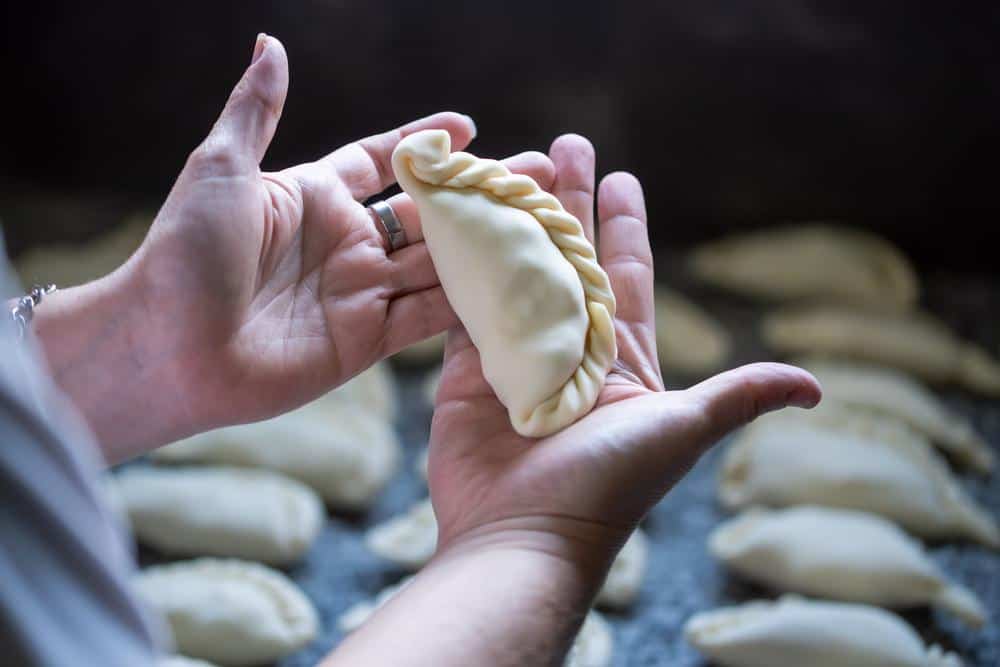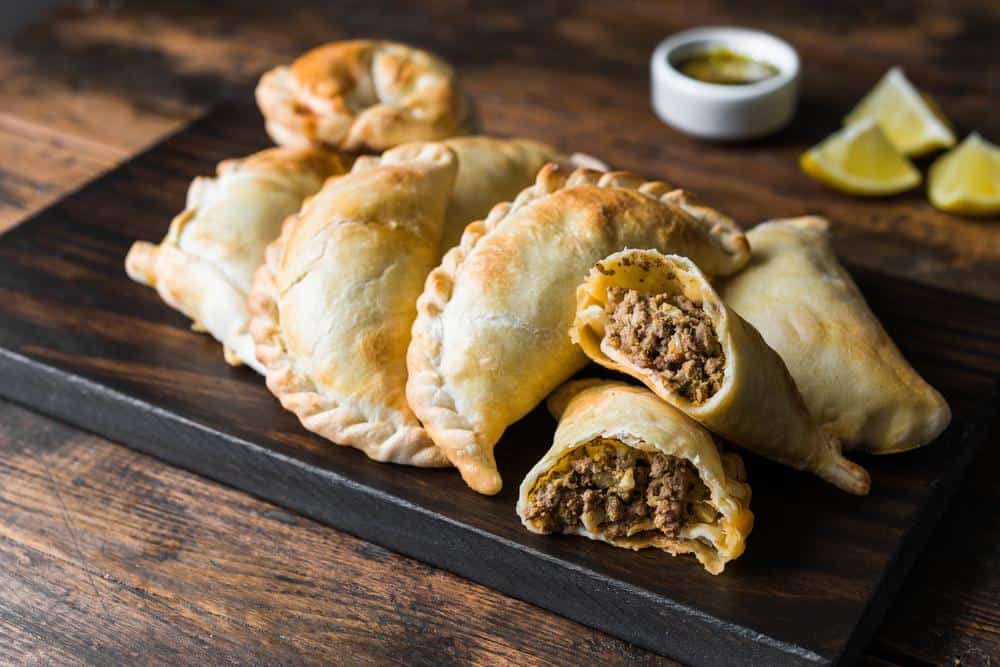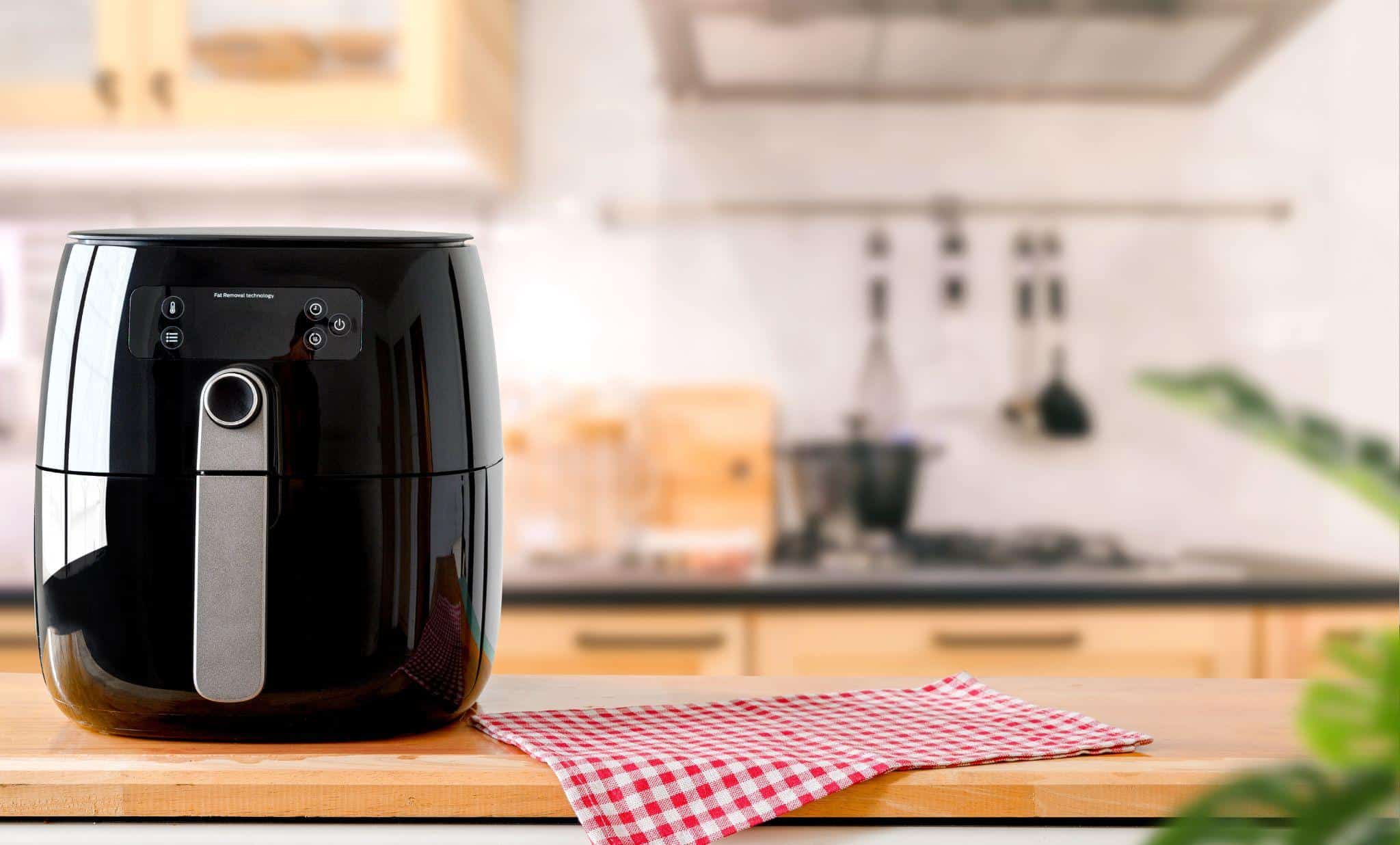You’ve got a bounty of empanadas in front of you. The stamps on the edges tell you which is which, and you marvel at all the flavors hidden within these little doughy envelopes. Just one problem-how are you going to heat up these empanadas? What is the right temperature for the job, and what’s the best tool?
Make them with any filling. Savory, sweet, breakfast, dinner, or dessert. Ground beef, chicken, or other meats, cheeses, fruits, vegetables, nuts. Empanadas can hold the most tooth-aching of breakfast pastries and the most satisfying of evening meals. As easy and fun as they are to make, they should be just as easy to reheat.
The sheer transportation capabilities of the empanada made it able to transverse continents in the bags of merchants and other travelers. It’s thought that the predecessors of the empanada came from Persia hundreds of years ago, distributed along trade routes, and adapted by the various cultures who came into contact with the doubt delight.
While the exact origins of the empanada are unknown, it is believed that the word is derived from the Spanish word empanar. Empanar means ‘to roll or cover.’ Pan also means ‘bread’ in Spanish, so some posit that empanada means ‘to cover in bread.’ That makes sense, considering empanadas are doughy envelopes filled with delicious surprises!
Empanadas have been increasing in popularity domestically. They are most commonly paired with coffee and/or tacos. Despite this popularity, most shops still send customers home with cooking instructions, as there’s a decent chance that most customers have never heated empanadas before.
Making Cheeseburger Emapandas (The Food Network)
Empanadas are a perfect size and shape for a quick meal on the go. Sadly, making them takes much more time than someone looking for a convenient option on the go can spare. Making empanadas in bulk saves time and money that may have been spent on faster, quicker meals. Freezing empanadas leaves just one hurdle to conquer; how do you reheat them?
Once you have a large batch of empanadas made, store them in the freezer for up to three months. You can freeze them within reusable food storage boxes, zipped plastic bags, or wrap them up individually in plastic wrap to prevent oxidation - or wrap with aluminum foil.

Uncooked empanadas ready for the oven
If you have kids, the last choice could be the best option. When they’re hungry for a snack, they can pop a foil-wrapped empanada in the toaster oven or air fryer. Just make sure they know not to put metal in the microwave! Older eaters can put several foil-wrapped empanadas in a convection or conventional oven.
If you’re planning on cooking up empanadas within the next day or two, it may be tempting to throw an unbaked empanada into the fridge to thaw or stay cold. The problem is that as they thaw, empanadas become soggy. Moisture is the enemy of the empanada dough, as it needs to stay dry for cooked empanadas to be crispy and flaky.
Overall, it is vital to remember that whatever method is chosen to reheat empanadas maintains the crispy integrity of the pastry. If you are concerned about the texture of your empanadas, there is an easy fix. Brush the empanadas with an egg wash before baking.
Crack an egg into a bowl. Add a splash of some food-safe liquid. Options include water, milk, and cream. Whisk the egg and the liquid together. Use a cooking brush to brush down the food. The result will be a golden-brown crust that elevates your dish to the next level.
It may be tempting to simply poke at the exterior of an empanada and declare it hot enough to eat. Unfortunately, this leads to tragedy a few moments later as a bite reveals that the filling is still icy cold.
The most reliable way to tell that empanadas are done is to take their temperature using a digital thermometer. You’re aiming to reach an internal temperature of 165 degrees Fahrenheit - which according to the USDA greatly reduces the chances of contracting a foodborne illness caused by bacteria.
Whether you are reheating a leftover empanada from a local restaurant, trying to cook frozen empanadas, or cooking up a pre-made batch from your own kitchen, there are many options for prepping this easy and delicious meal.
Traditional ovens are a basic, easy way to reheat empanadas. While the tool itself may not necessarily be the best at maintaining crispiness, you can alter the empanadas to help maintain or develop that crispy exterior. Spritzing the empanadas with cooking oil can help them develop a nice crust. An egg wash is also an excellent option for the traditional oven user.

Perfectly cooked empanadas fresh out of the oven
Preheat the oven to medium heat - around 350 degrees Fahrenheit. Place empanadas on a baking sheet covered with aluminum foil. Depending on their size, it will take seven to 12 minutes to reheat frozen empanadas. Five to ten minutes should be more than enough for room temperature or thawed empanadas.
For reheating in a traditional oven, you can stick with traditional flavors. For example, hearty brisket, pork, and shredded beef empanadas would all reheat well on a classic baking sheet. Mushroom-based fillings may also benefit from this style of reheating.
A convection oven differs from a traditional oven because it has a fan to blow the hot air around. This results in a much more even cook than in a conventional oven. It also produces quicker cook times, which means it is vital to adjust recipes for convection ovens.
Preheat the oven to 300 degrees Fahrenheit. Place empanadas on a baking sheet covered with aluminum foil. As an option, you can spray them down with cooking oil or brush them with an egg wash.
Depending on the size, a frozen empanada can take six to ten minutes to heat up. However, thawed or fresh ones needing a quick facelift need only three to five minutes.
Convection ovens may be the best option for fruit and nut-filled empanadas. Dessert empanadas, often containing soft cheese and creamy elements, especially benefit from being reheated in a convection oven.
Air fryers are actually just convection ovens for the countertop. Air fryer recipes have an advantage over convection cooking by being much smaller, meaning there is a much shorter preheat window. The air fryer can also cook quicker, though in smaller quantities than an oven. An air fryer is a perfect option for reheating a single empanada.

Put your empanada in an air fryer basket for a few minutes until it reaches the perfect temperature
Preheat the oven to 300 degrees Fahrenheit. Empanadas straight from the freezer may take five to seven minutes. A fresh one needs just a little bit of heating up, so it will be ready in as little as three minutes with the air fry method.
When using an air fryer, always keep in mind: what sounds good fried? Potato-filled empanadas may produce a uniquely delicious result. Cheesy fillings also do well in air fryers, reheating for that perfect cheese pull.
Toaster ovens are also a great option for reheating small portions efficiently. The self-contained nature of the toaster oven makes it ideal for quick, easy prep of a snack or meal. Let your empanada breakfast reheat while you brew coffee or pack lunch.
Preheat the oven to 300 degrees Fahrenheit. Frozen empanadas will likely need ten minutes in a toaster oven. Fresh and thawed ones may need five to seven minutes.
For the toaster oven, consider the more delicate and temperamental fillings. Seafood, like tuna and shrimp, may fare best in the toaster oven. Eggy fillings, like a breakfast-burrito-styled empanada, can also thrive when reheated in a toaster oven.
While the above methods are the most recommended, there are many ways to cook up fried dough with filling. Some are definitely better than others, so let’s break down the options.
Using a deep fryer is a traditional method to cook empanadas. The oil of a deep fryer will definitely produce the desired crispiness of an empanada and enhance the flavors of the filling. Although a fried empanada isn't as healthy as a baked empanada, they’re arguably more delicious!
However, the biggest downside to using a deep fryer to reheat empanadas is that they are harder to use than the other options and thus less convenient.
Heat your oil to 350 degrees Fahrenheit. Fry empanadas for two to three minutes on each side, then flip. The result should be golden brown and delightfully crispy.
Much like the increased difficulty of using the deep fryer, grilling empanadas can take more experience and expertise with a specific tool. Not to mention, grilling outdoors is dependent on the weather where you live.
Preheat the grill to 300 degrees Fahrenheit. Place empanadas on the grill. For a more even cook, lay down foil to put the empanadas on so they are not resting directly on the grate. Grill for a couple of minutes on either side, brushing the sides with oil, butter, or other browning agents.
While a toaster oven may work perfectly for reheating empanadas, we do not recommend using a toaster to do so. Toasters are intended to be used just for dry bread products, such as bagels and sliced bread. Any fillings leaking out of the empanada will be very difficult to clean up and likely burn within the toaster.
While a microwave would absolutely be the most convenient option for reheating empanadas, it fails the main goal of maintaining crispiness. A microwaved empanada is a soggy empanada. If a microwave is the only available option, wrap each empanada in a paper towel before microwaving in 30-second bursts. The paper towel should help absorb some of the moisture.
